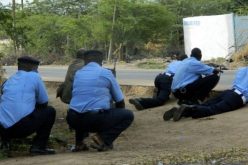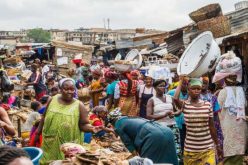By JIM YARDLEY
NEW DELHI – An eight-story building in Bangladesh that housed several garment factories collapsed on Wednesday morning, killing at least 70 people, injuring hundreds of others, and leaving an unknown number of people trapped in the rubble, according to Bangladeshi officials and media outlets.
The building collapse occurred in Savar, a suburb of the national capital of Dhaka, and is the latest tragic accident to afflict Bangladesh’s garment industry. Bangladesh is the world’s second-leading garment exporter, trailing only China, but the industry has been beleaguered with safety concerns, angry protests over rock-bottom wages and other problems.
This latest fatal accident, coming five months after a fire at the Tazreen Fashions factory killed at least 112 garment workers, is likely to again raise questions about work conditions in Bangladesh: workers told Bangladeshi news outlets that supervisors had ordered them to attend work on Wednesday, even though cracks were discovered in the building on Tuesday.
Photographs showed rescue workers in hard hats climbing ladders into the pancaked structure, even as hundreds of people crowded outside, waiting to see if survivors could be pulled from the wreckage. Health Minister AFM Ruhal Haque told reporters that at least 70 people were killed, more than 600 were injured and others remained trapped.
Bangladesh’s garment industry has grown rapidly during the last decade, particularly as rising wages in China have pushed many global clothing brands to look for lower costs elsewhere. Bangladesh has the lowest labor costs in the world, with minimum wage in the garment industry set at roughly $37 a month. Retailers and brands including Walmart, H&M, Sears, Gap, Tommy Hilfiger and many others have outsourced the production of billions of dollars of clothes there.
Industry proponents say the garment industry has been an essential engine for the Bangladeshi economy, lifting millions of people, particularly women, out of abject poverty, even with such low wages. Today, garments represent roughly 80 percent of Bangladesh’s manufacturing exports and provide a critical source of foreign exchange that the government needs to help offset the high costs of imported oil.
But critics have blamed the Bangladesh government, factory owners and global brands for doing too little to protect workers with safe working conditions or to pay them a livable wage. Labor unions are almost nonexistent inside garment factories, and a labor organizer, Aminul Islam, was tortured and murdered. His death remains unsolved.
Alonzo Susan, country director for the American Center for International Labor Solidarity, a labor rights group, said Wednesday’s accident illustrates the repeated failure of government inspectors to insure that safety standards are met.
“It is substandard construction, shortcut construction,” Mr. Suson said. “There was already a crack in the building.”
Last November, the Tazreen Fashions fire underscored the poor safety conditions and work conditions at many Bangladeshi factories. Investigators later found gross negligence in fire safety preparedness as well as in the actions of factory managers. When a fire alarm sounded inside the factory, some managers told workers to go back to work, saying the alarm was only a drill. The managers then left the building, even as many workers would be trapped inside.
The fire also exposed the opaque sourcing process used by many global retailers. Workers inside Tazreen Fashions were making clothes for Walmart, Sears, Li & Fung and many other global giants. Yet Walmart and Sears both denied any knowledge that their clothes were being produced inside the factory, instead blaming suppliers for secretly subcontracting the jobs.
Building safety is yet another concern. Many factories are smaller operation built inside nondescript office buildings. In 2005, at least 64 workers at Spectrum Garments were killed when the factory’s building collapsed.
After Wednesday’s collapse, photographs from the scene showed thousands of people converging on the site, with news reports saying the some of them were openly weeping and searching for family members.
One garment factory owner told The Associated Press that while some people were pulled out alive from the rubble, scores of dead bodies were still buried underneath the debris.
“We had sent two people inside the building and we could rescue at least 20 people,” Mr. Humayun said. “They also told us that at least 100 to 150 people are injured and about 50 dead people are still trapped inside this floor.”
Gerry Mullany contributed reporting from Hong Kong.
NT TIMES










